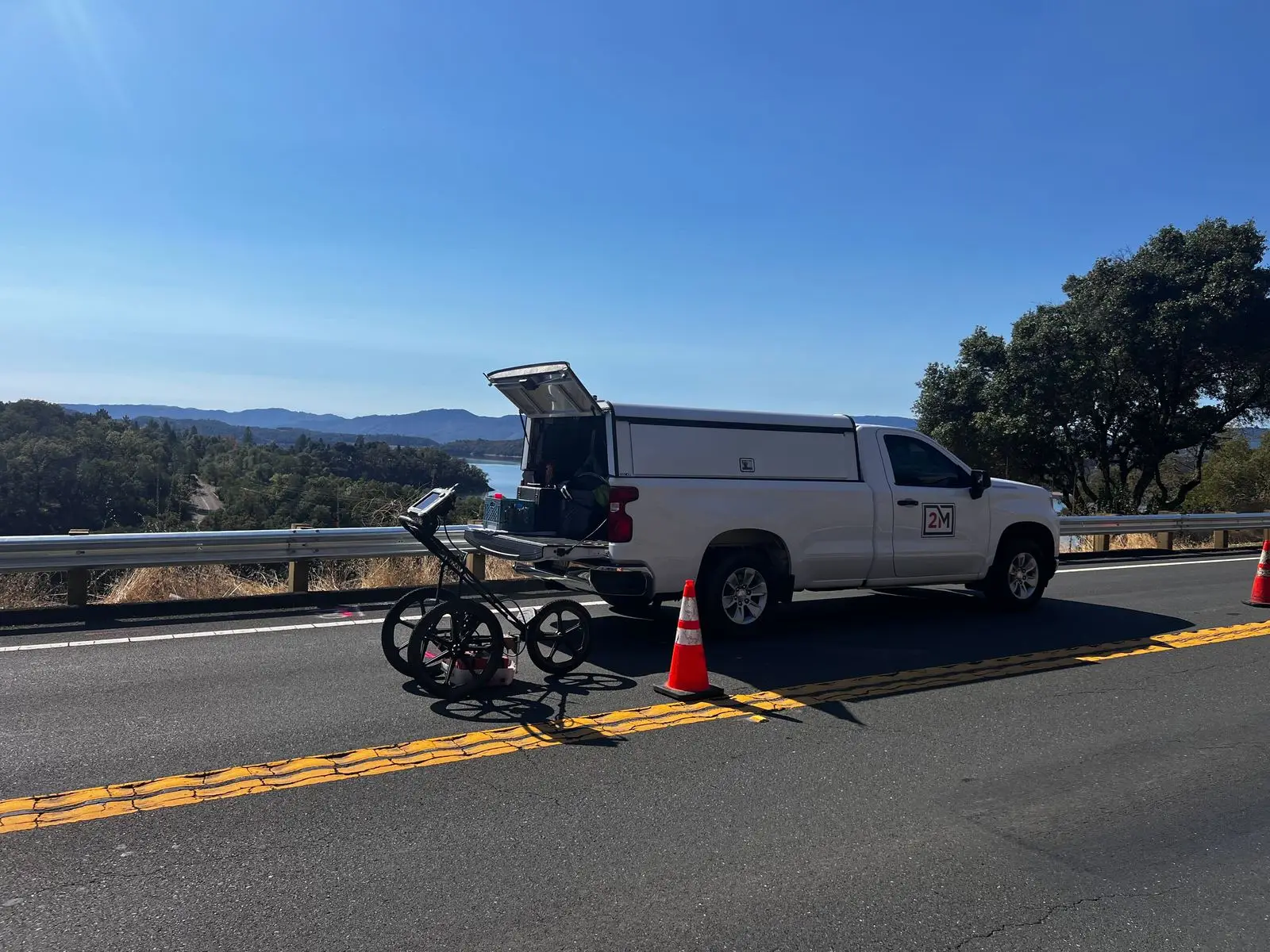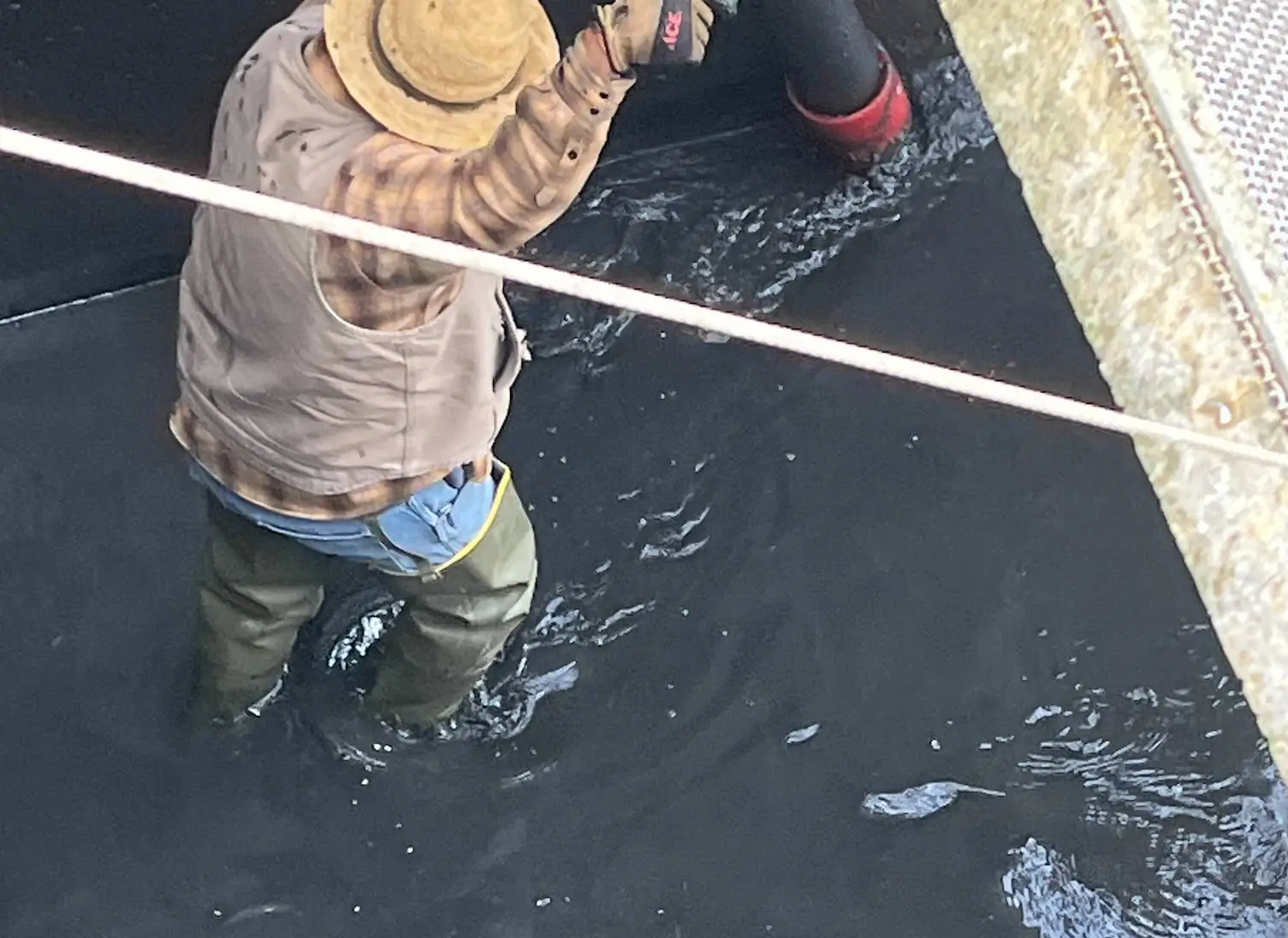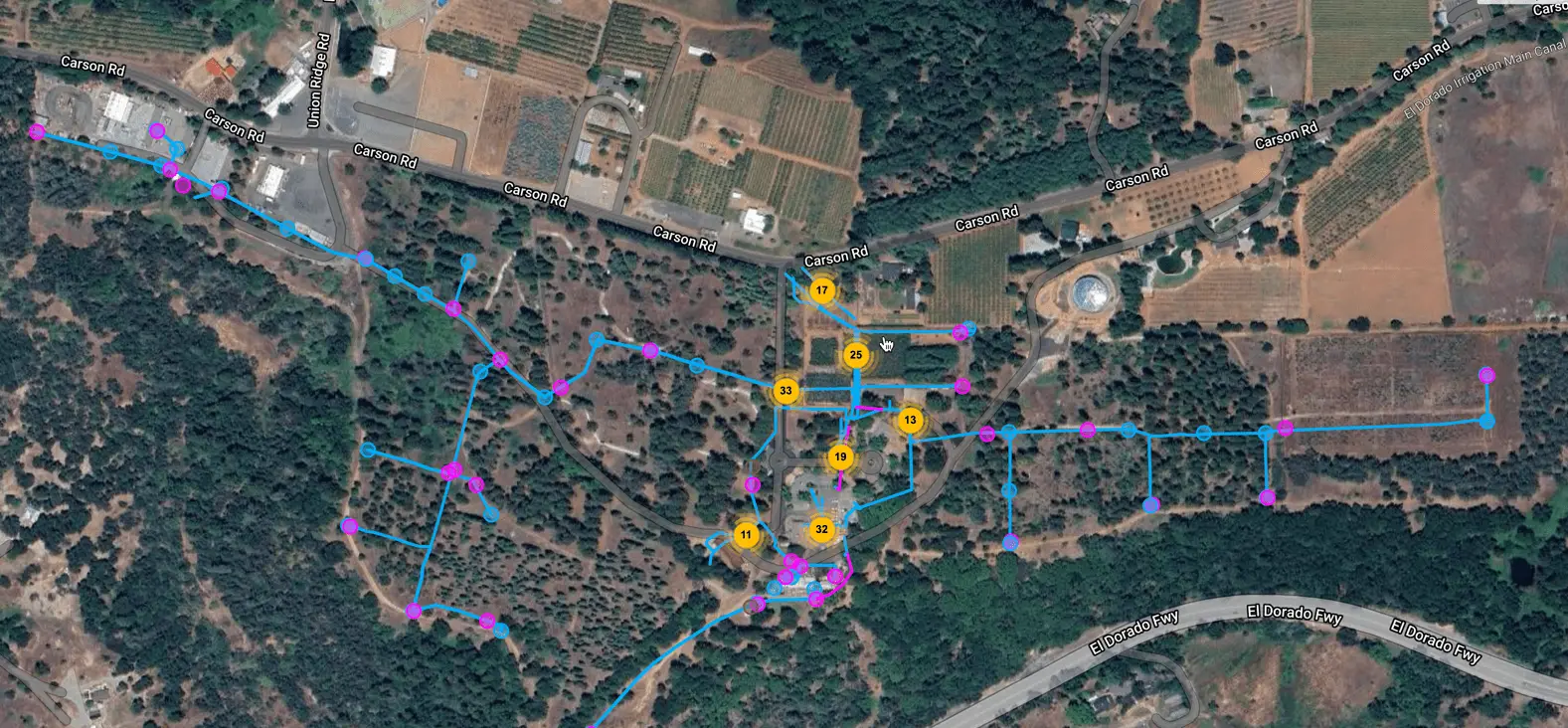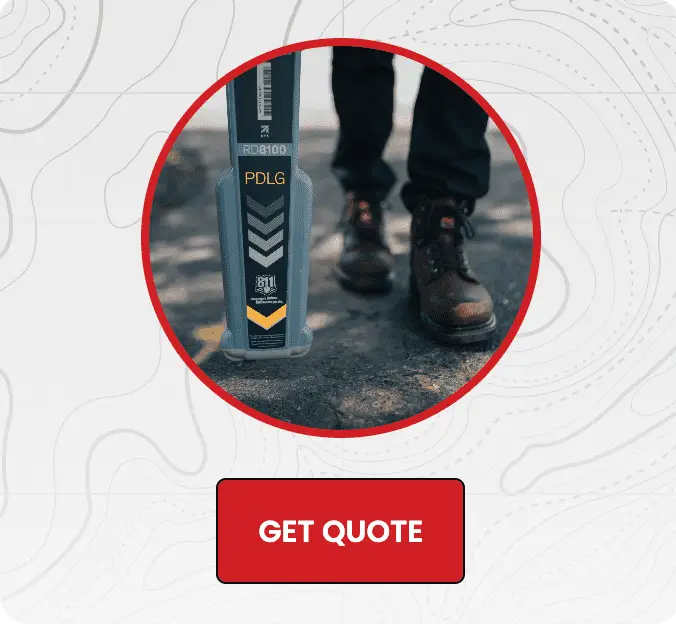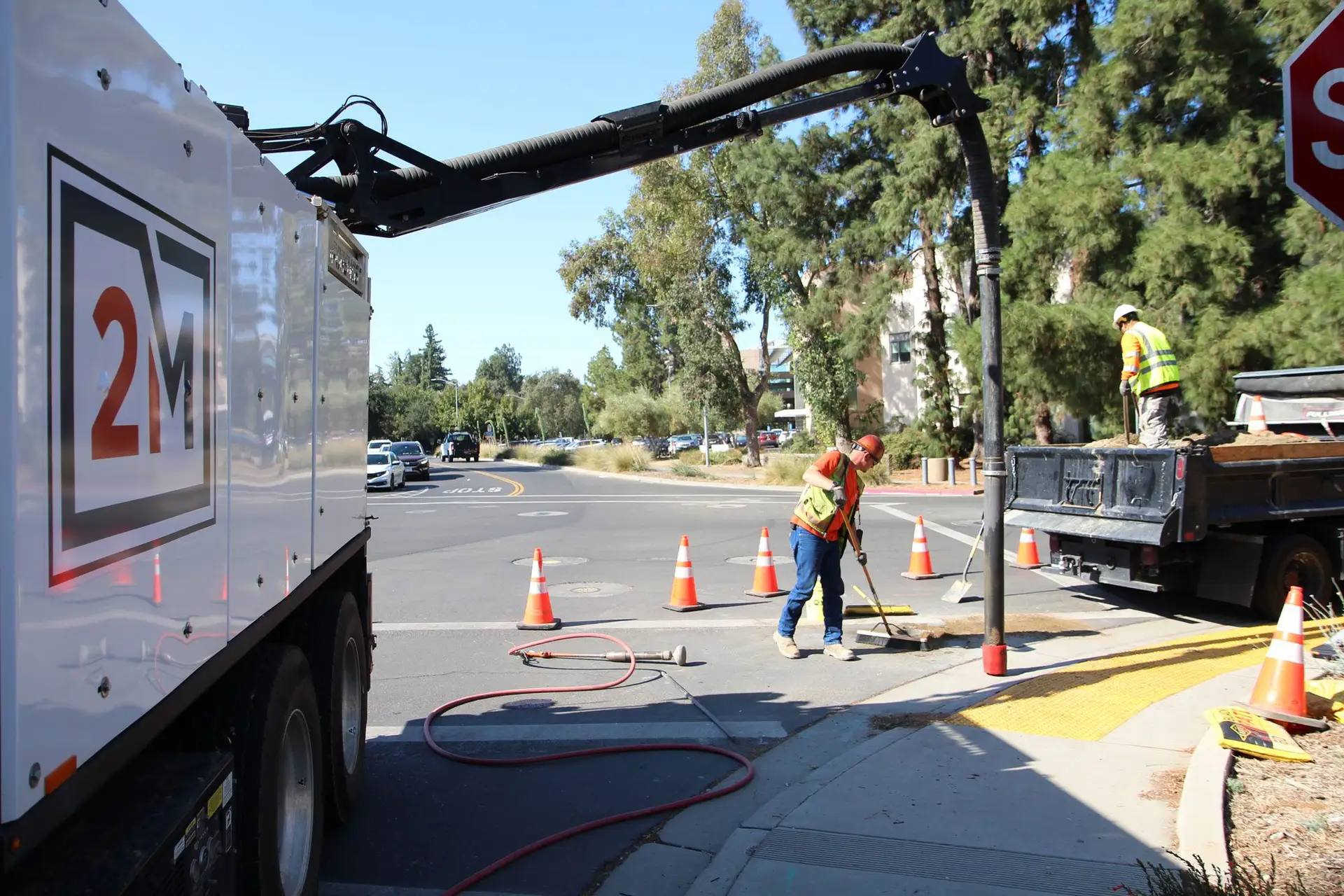Description.
Project Overview:
The 2MGE team was contracted to remove accumulated clam shells and sediment from water tanks and drainage ponds in Colusa County. Over time, debris buildup was reducing flow efficiency and causing potential maintenance issues. Using advanced vacuum excavation, we successfully cleared the tanks and ponds, restoring full functionality and preventing future blockages.



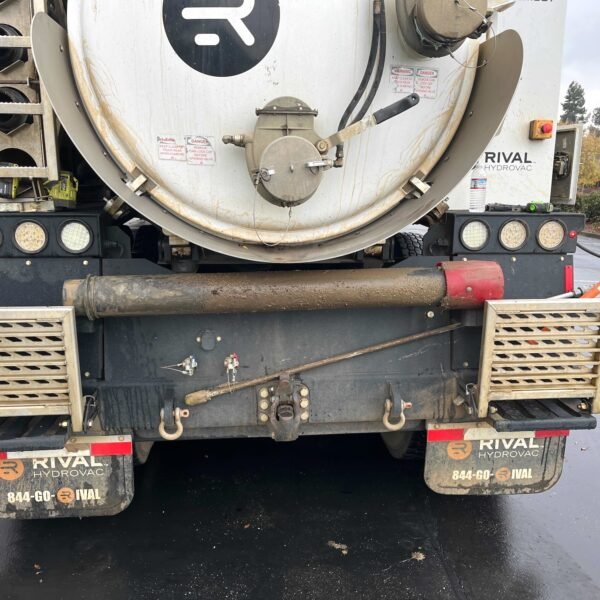
Challenges
- The tanks and ponds in Colusa County’s water infrastructure had accumulated a significant amount of clam shells, sludge, and debris.
- Restricted water flow was leading to inefficiencies in the system, posing operational challenges.
- Traditional cleaning methods were either too slow, costly, or ineffective for handling the volume of debris.
- The client needed a fast and effective method to clear out the buildup without causing downtime.
Solution
- Our team deployed vacuum excavation trucks to safely remove sediment, debris, and clam shells.
- The ponds were drained efficiently, reducing water waste while allowing thorough cleaning.
- Specialized high-powered suction equipment removed built-up sludge without damaging infrastructure.
- The process was completed ahead of schedule, minimizing disruption to the client’s operations.
Results
✅ All clams and sediment removed
✅ Major increase in water flow efficiency
✅ Tanks and ponds fully restored for continued use
✅ Minimal downtime for the client’s operations
Client Testimonial
“2M General Engineering did a fantastic job clearing our water tanks and drainage ponds. Their vacuum excavation process was quick and efficient, and they minimized disruption to our operations. We highly recommend their services for any reclamation or irrigation projects.”
-Jorge Jamie / Operations / Colusa County Water District
💡 Have a similar issue? Let us help.
📞 Contact us today for a free consultation on tank cleaning, pond drainage, or vacuum excavation services.
916-237-7445
Unveiling the Depths: A GPR and Potholing Expedition at the USFS Research Station
In the quiet expanse of the US Forest Service (USFS) Research Station, a groundbreaking project was unfolding, spearheaded by TWM and supported by the US Army Corps of Engineers. Our mission was clear: to locate and map approximately 16,000 feet of waterline while documenting over 90 features, and to perform strategic potholing at 70 crucial locations. This project was not just about updating maps; it was about paving the way for future conservation and infrastructure management.
Navigating the Challenges
The terrain of the USFS Research Station is a mosaic of densely wooded areas, posing significant challenges in terms of navigation and safety. The risk of fire was a constant concern, requiring us to implement rigorous fire prevention protocols and to ensure all equipment and personnel were meticulously cleaned before entering the protected areas. The objective was twofold: to preserve the pristine environment and to gather data with high precision to enhance the USFS’s existing infrastructure maps.
The Role of Locating Technology
Our primary tools for underground utility locating were Ground Penetrating Radar (GPR) and Electromagnetic (EM) detection systems. These sophisticated technologies allowed us to peer beneath the earth’s surface, detecting hidden water lines and unseen features that lay buried under layers of soil and vegetation. However, GPR and EM have their limitations, particularly in areas dense with underground interferences or deep non-conductive materials. It was in these areas that we turned to potholing as a verification method, which allowed us to physically confirm the presence of underground utilities.
Strategic Potholing
Given the vast expanse of the project, we planned the potholing in intervals to cover the entire area thoroughly. We completed a total of 70 test holes, which not only confirmed the data collected via GPR and EM but also provided physical samples and a direct look at the underground structures. This method ensured that no feature was left undocumented, maintaining the integrity and completeness of our survey.
Data Processing and Deliverables
The culmination of our fieldwork was the processing of the data collected. This involved generating fully processed xyz ASCII formatted files, which included detailed metadata such as point number, northing, easting, elevation, and description. All data was meticulously collected and compiled into an ESRI Geodatabase in compliance with the USACE SDSFIE 3.1.0 standards, ensuring the information was ready for integration into ArcGIS platforms. Furthermore, all GPR results and supporting documentation were prepared in both MicroStation and ESRI Shapefile formats, providing versatile options for future reference and use.
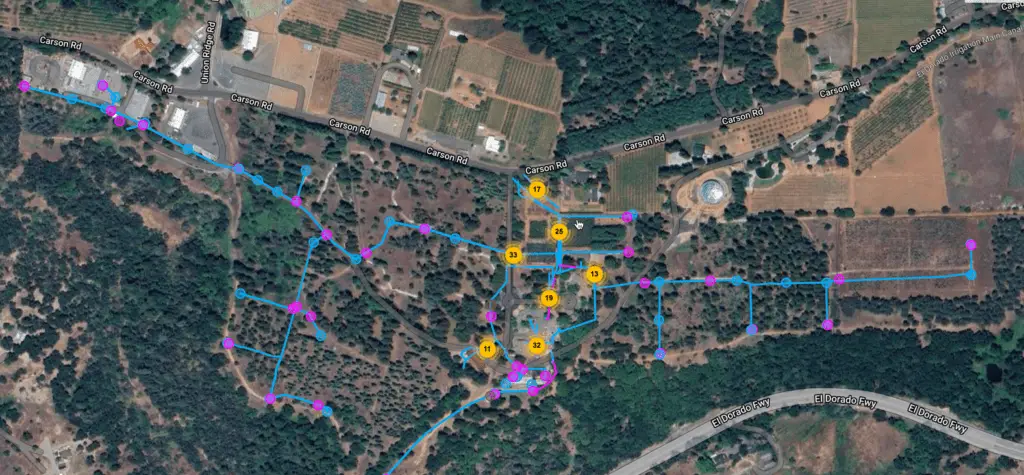
Impacting the Future
The comprehensive mapping and verification process undertaken at the USFS Research Station are set to significantly enhance the USFS’s ability to manage and maintain its water system infrastructure. By providing detailed documentation and updated geospatial data, we are not only supporting the USFS’s current needs but also empowering future conservation efforts and land management initiatives.
This project is a testament to the power of integrating technology with traditional field methods to achieve precision in environmental and infrastructure management. It underscores our commitment to advancing our understanding of the natural world while preserving its integrity for future generations.
Introduction
2M General Engineering undertook a pivotal six-week potholing project at UC Davis, focusing on the design phase of a new switch station and the execution of potholing operations. This case study captures the essence of the challenges faced, the strategic solutions implemented, and the seamless execution that led to the project’s success, complemented by a testimonial from our clients.

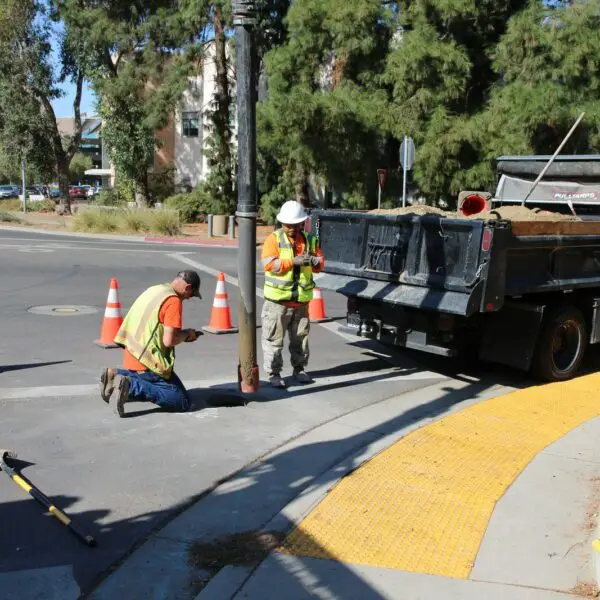
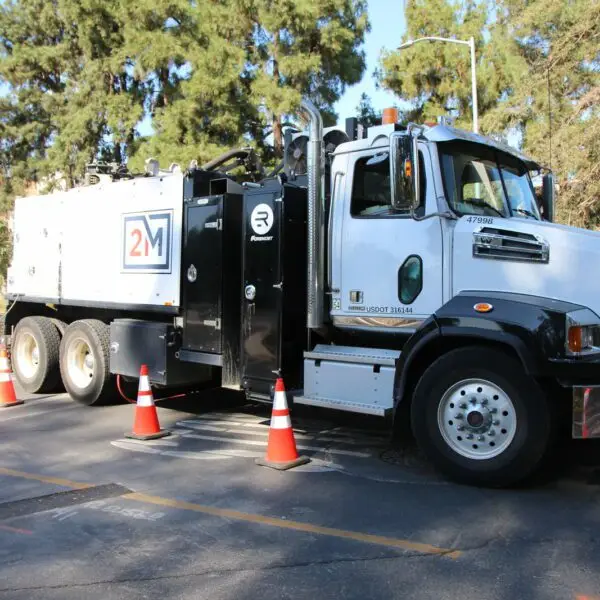
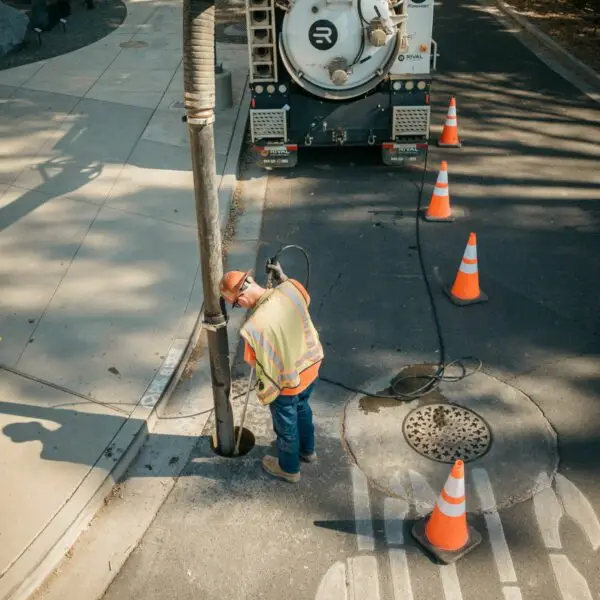
Challenges
The active campus environment and the notably hard ground conditions presented significant challenges. The project required minimal disruption to the campus while dealing with the difficult digging conditions.
Solution
Our strategic approach included:
- In-depth Review: We meticulously reviewed as-built documentation and conducted a comprehensive site visit to align with the UC Davis Utilities team.
- Prioritized Execution: With the academic semester approaching, we expedited potholing in critical areas needing road closures to avoid disrupting campus life.
- Collaborative Effort: Our ongoing coordination with UC Davis was instrumental in ensuring the project’s swift and successful completion.
Results
The project concluded triumphantly, with all objectives met within the stipulated timeframe. The final tally of potholes was 168, with 97 in hardscape/asphalt and 71 in landscape/dirt areas. The precision of our work is documented in the civil grid report, and the site was restored to its original condition, including repaving work where necessary.
Additional Highlights
- Civil Grid Insights: We will display screenshots of the civil grid, providing a visual account of the project’s meticulous planning and execution.
- Restoration and Repaving: Our commitment to leaving the site in pristine condition was evident in our thorough backfill, restoration, and repaving efforts.
- Pothole Summary: The project encompassed 168 potholes, with a detailed breakdown of 97 in hardscape/asphalt and 71 in landscape/dirt, showcasing our ability to adapt to varying ground conditions.
Conclusion
2M General Engineering’s dedication to operational excellence shone throughout the UC Davis switch station project. Our proactive planning, adaptive strategies, and diligent execution ensured the project’s completion with minimal campus disruption and a testament to our commitment to quality and efficiency.

